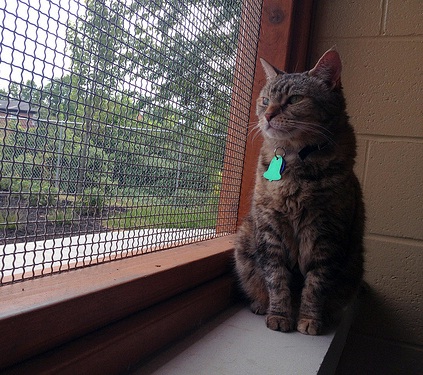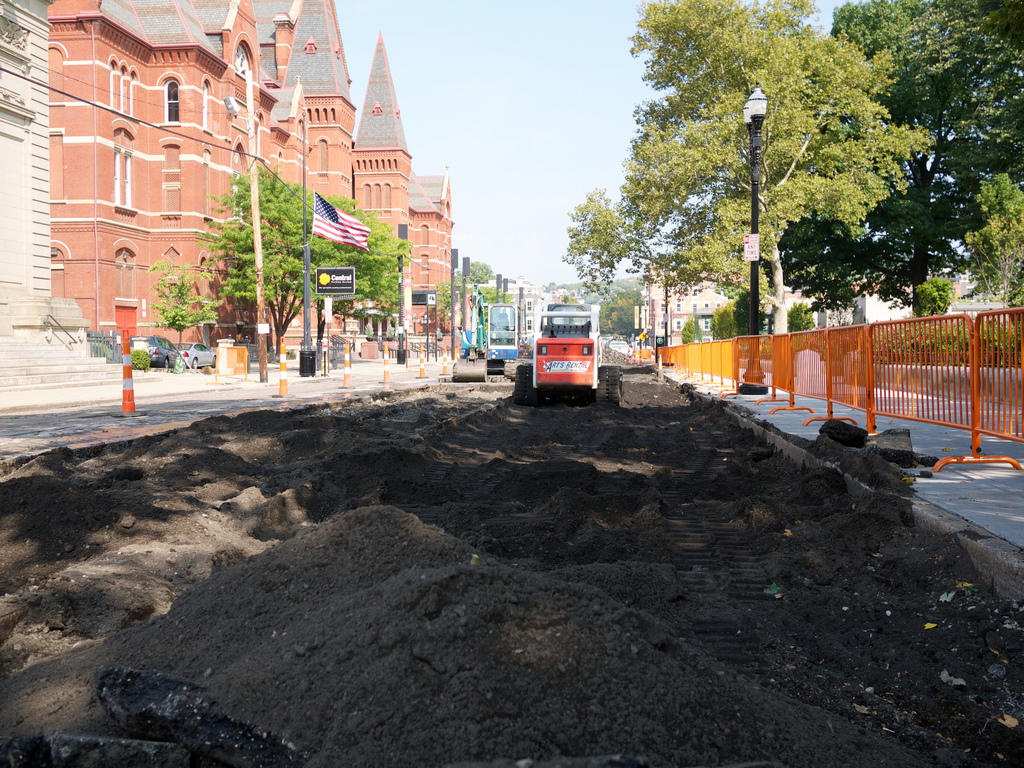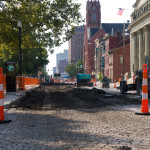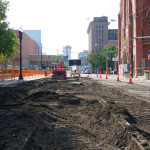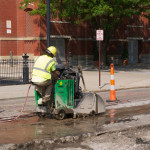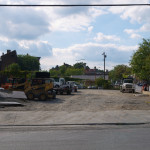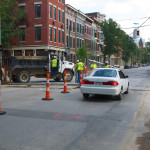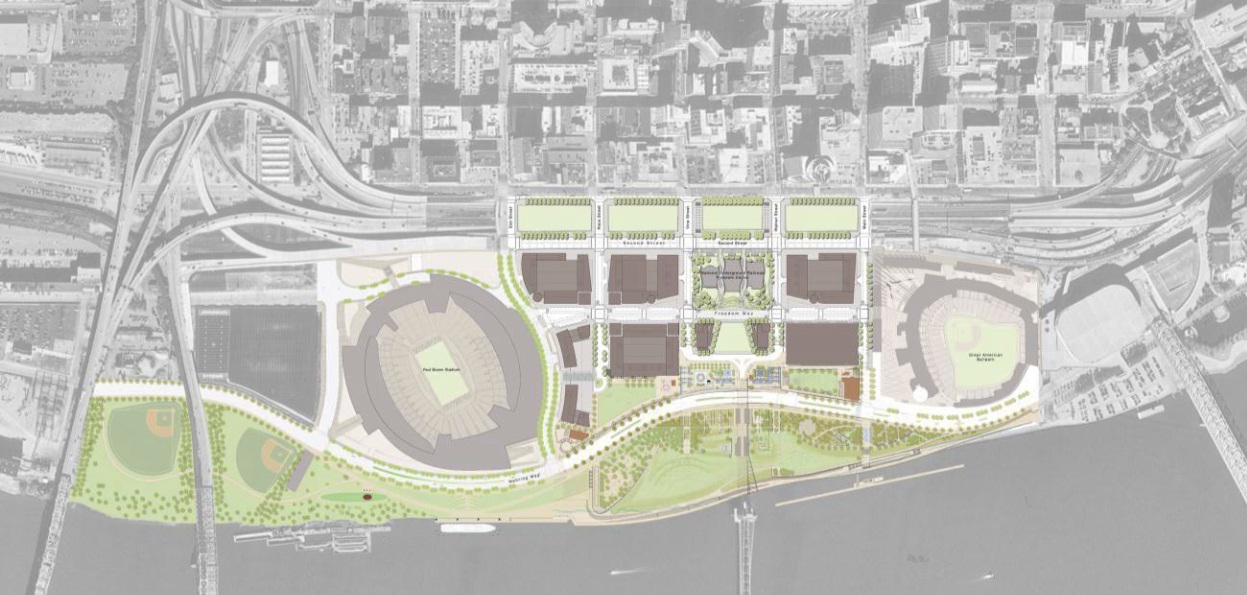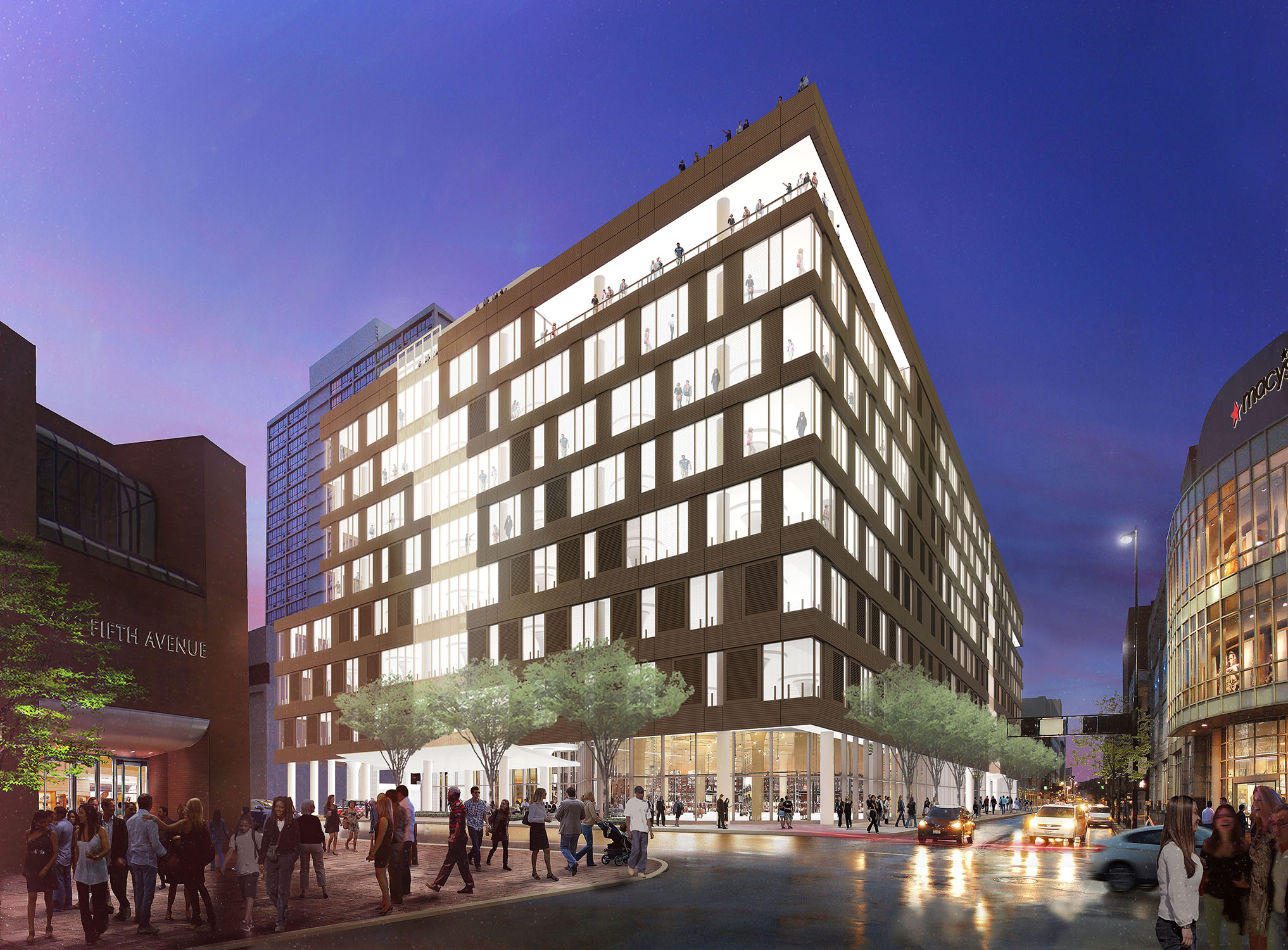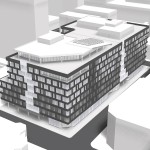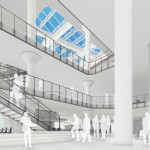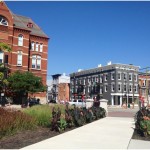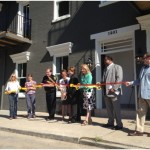The Ohio Alleycat Resource & Spay/Neuter Clinic (OAR) expanded into its new adoption center in Madisonville last month thanks to a generous $1.6 million donation from the Joanie Bernard Foundation.
The facility, the Joanie Bernard Home for Cats, was named in honor of the life-long cat lover. OAR’s adoption center is located adjacent to the current spay/neuter clinic which still houses 75 of the rescue’s cats. The new building offers 4,800 square feet of feline housing, which is double the amount of the original spay/neuter clinic.

The new $1.6M OAR Home for Cats in Madisonville opened last month. Photograph by Paige Malott for UrbanCincy.
Inviting glass windows, wood framed doors, and custom play equipment makes life comfortable for OAR’s cats that are in between homes. In addition, there are special rooms for kittens, elderly cats, and those with a medical condition. Each room features a screened porch, which allows cats to access a protected outdoor area on their own through the use of a pet-sized door.
Over 400 people stopped by the Joanie Bernard Home for Cats for its grand opening, with many families taking home a new feline friend. To help guests learn more about their cats, OAR includes the animal’s back story on each room. Experiences tug at the heartstrings from tales of lost kittens to an 11-year-old cat that was displaced when his elderly owner passed away.
Other details include the cat’s age, breed, name, and picture so that visitors may identify a cat that shares a communal room.
With a modern, clean atmosphere, the Joanie Bernard Home for Cats hopes to appeal to those considering pet adoption and make the meet-and-greet experience more interactive for both human and feline.
Currently, OAR finds homes for 300 cats annually. Charlotte E. White-Hull, Director of Development and Outreach for OAR, estimates that the updated facility will increase the number of cat adoptions by 25%. By expanding into the new facility, OAR’s spay/neuter clinic also looks to double its service to treat over 16,000 cats a year.
